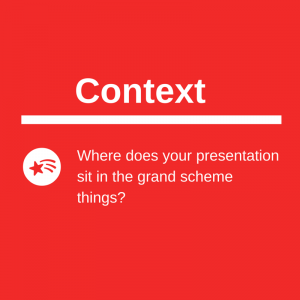How to “Home Run” Your Important Presentations
Effective influencing skills do not come guaranteed with technical proficiency (Tweet this)
As you move higher through an organisation, the less important your technical skills become and the more critical your powers of persuasion and influence.
I recently had the privilege of working with a lovely guy who was new into one of my client organisations. He was there to fulfill a role that was also new to the organisation. As the subject matter expert in his area, he was coming in with a proven professional track record. Year after year he had consistently delivered in his previous organisations.
So why was I called in to work with him?
Well, the ‘new guy’ was there to float the ‘new role’ with the business and while, technically, he was capable of nailing the role in his sleep, selling it to the business stakeholders was a different matter. The role had a huge communication dimension to it, which exposed our “newbie expert” to some of the most senior people in the organisation. His first forays had been, shall we say, lack-luster and this represented a potential roadblock to the success of the role and our “newbie”.
We worked, fairly intensely, together for the next 5 weeks and made some profound observations, and powerful, yet simple, improvements that were ultimately lauded as an “impressive turnaround” by his line manager. His confidence soared, as did his competence in winning people over. As the line manager so eloquently put it, “He really found his voice”.
It was a simple process; no rocket science. It worked for him and, I have no doubt, it will work for you too. So here, for your delectation, is a brief outline.
4 Key Considerations:
There are 4 key considerations when addressing important presentations:
- Preparation
- Distractions
- Context
- Personal Impact
Preparation
Benjamin Franklin once said:
By failing to prepare, you are preparing to fail
Preparation is essential. However most people jump straight into the preparation of the presentation itself. Now this is, of course, critical and, I think you will agree, adequately preparing the content for any presentation is price of entry. However, starting with the content, you miss the most important moving part of your impending presentation, namely “You”.
How do you want to feel during the presentation?
What would be your ideal headspace in that moment?
 People rarely ask these questions and as a result, their preparations are incomplete. When we do ask these questions of ourselves, we may answer with words like confident, comfortable, breathing evenly, knowledgeable. This gives us a reference point for the next important question:
People rarely ask these questions and as a result, their preparations are incomplete. When we do ask these questions of ourselves, we may answer with words like confident, comfortable, breathing evenly, knowledgeable. This gives us a reference point for the next important question:
What needs to happen prior to a presentation to facilitate my ideal headspace during the presentation? (Tweet this)
Now we’re talking! Because this is a much broader approach that shakes loose some headings that are obvious and some that are less so:
- Key message – This is obvious. What do I want to say? Are there threads or themes that I could use to facilitate the understanding of the message?
- Content – Including correct, factual and accurate data to back up the assertions in the key message.
- Potential Objections / Concerns – This too is obvious, although sometimes overlooked. What points will be of most concern? What points may need clarification? How will I address those concerns?
- Audience– The personalities around the table are often completely overlooked. Knowing who is going to be there and what their communication preferences are, can give great insight into the type of content and presentation style that will be most effective. It can also inform your exploration of potential distractions. Especially if their personality is very different to yours.
- Analogy / Metaphor / Stories / Anecdotes– People love stories. They help capture and maintain attention for longer periods of time and can make particularly technical material more accessible.
Distractions
Whether we prepare or not, every now and then we will be thrown a curve ball. These can be flung out of:
- Misunderstanding of the content,
- Disagreement with the content or
- Others’ interpretation of how this message will impact on their world.
If you have given due consideration to your potential objections and concerns above, you should be well positioned to field these types of curve balls.
 However, you could experience, what I call, behavioural curve balls:
However, you could experience, what I call, behavioural curve balls:
- Late starts
- Early starts
- Audience on phones or tablets
- Negative reactions to you or what you represent
- Difficult members of the audience
- Storm outs
- Or just plain-old opposite communication styles doing what comes naturally
All of which, when encountered unexpectedly, can stop you in your tracks or at the very least throw you off message.
These are infinitely more difficult to deal with in the moment because they are emotive and often send the “gremlin” in your head into overdrive:
- “You’re out of your league”
- “They don’t like you and never will”
- “Your information is incorrect, they’ve seen through your façade!”
- “They’re a bunch of numpties, what do they know anyway?”
All of these internal statements are reactive and none are conducive to remaining in that “ideal headspace” you defined earlier. Therefore, you really have to wrestle with this one before hand.
The focus, in this instance, is not on dealing with the distraction. Rather it is about remaining “adult” throughout.
Crystal clear intention is the bedrock for remaining adult
What is the purpose of this presentation?
What is my role in it?
The answers to these questions become your “safe place”. The place you jump to when the unexpected happens. So, for example, if my role in the presentation is to facilitate the audience’s understanding, my approach to any challenge becomes an endeavour to better understand the challenge, rather than taking that challenge as a personal sleight!
Context
- What are the key agenda topics?
- Where will my segment sit in the overall scheme of the meeting’s agenda?
- Where would I prefer it to sit?
- Do I have control over that?
This is a little less obvious and sometimes out of your control, unless you are constructing the agenda personally. If presenting first, middle or last is going to make you feel more at ease and you don’t have control of the agenda, then:
If you don’t ask, you don’t get!
Personal Impact
Never underestimate the power you exude as you walk into a room, to the positive or the negative. The old adage,
First impressions count
is an “old adage”, because it contains wisdom of old. Listen to it! How you enter the room or launch into your presentation should be in line with your “ideal headspace”, whatever that is. So define it for yourself. Then consider what this means for your presentation’s structure, pace and the way you drive it.
And remember,
Other peoples opinion of you is absolutely none of your business (Tweet this)
So get over it, get into your ‘role’ for the presentation and get on with it!
Killer content coupled with a little forethought around Preparation, Distractions, Context and Personal Impact will knock them out of the park!
Swing bada bada bada bada bada Swing!
